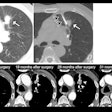Dear X-ray Insider,
Unlike x-ray studies performed on other areas of the body, when a pelvis x-ray is ordered, usually only an anteroposterior (AP) projection is obtained. These standard radiographic projections are used to evaluate injury to the pelvic girdle and proximal femur.
Getting the most from these projections requires a combination of technique and proper patient positioning to ensure optimal images. Dr. Naveed Ahmad takes this task in hand in the latest installment of his series on x-ray positioning techniques.
According to Dr. Ahmad, most traumatic conditions involving the sacral wings, the iliac bones, ischium, the pubis, and the femoral head and neck can sufficiently be evaluated on the AP projection of the pelvis and hip. This view also demonstrates an important anatomical relationship in the longitudinal axes of the femoral neck and shaft.
However, the AP view is frequently not sufficient to provide adequate evaluation of the entire sacral bone, the sacroiliac (SI) joints, and the acetabulum. To image these areas properly, special radiographic projections such as the AP axial outlet projection, AP axial inlet projection, oblique projections for acetabulum, groin projections (axiolateral), and posterior oblique projections for SI joints are ordered. They are usually requested in trauma patients after a routine AP projection shows some pathology or in post-surgery patients who need follow-up evaluation.
As an X-Ray Radiology Insider subscriber, you have access to this story before it’s published for the rest of our AuntMinnie.com members. To read more about Dr. Ahmad’s tips and suggestions for pelvic imaging, just click here.
Also, if there’s an x-ray imaging topic you’d like to see us write about, or you would like to author an article for us, please contact me at [email protected]. I look forward to hearing from you!
Unlike x-ray studies performed on other areas of the body, when a pelvis x-ray is ordered, usually only an anteroposterior (AP) projection is obtained. These standard radiographic projections are used to evaluate injury to the pelvic girdle and proximal femur.
Getting the most from these projections requires a combination of technique and proper patient positioning to ensure optimal images. Dr. Naveed Ahmad takes this task in hand in the latest installment of his series on x-ray positioning techniques.
According to Dr. Ahmad, most traumatic conditions involving the sacral wings, the iliac bones, ischium, the pubis, and the femoral head and neck can sufficiently be evaluated on the AP projection of the pelvis and hip. This view also demonstrates an important anatomical relationship in the longitudinal axes of the femoral neck and shaft.
However, the AP view is frequently not sufficient to provide adequate evaluation of the entire sacral bone, the sacroiliac (SI) joints, and the acetabulum. To image these areas properly, special radiographic projections such as the AP axial outlet projection, AP axial inlet projection, oblique projections for acetabulum, groin projections (axiolateral), and posterior oblique projections for SI joints are ordered. They are usually requested in trauma patients after a routine AP projection shows some pathology or in post-surgery patients who need follow-up evaluation.
As an X-Ray Radiology Insider subscriber, you have access to this story before it’s published for the rest of our AuntMinnie.com members. To read more about Dr. Ahmad’s tips and suggestions for pelvic imaging, just click here.
Also, if there’s an x-ray imaging topic you’d like to see us write about, or you would like to author an article for us, please contact me at [email protected]. I look forward to hearing from you!















